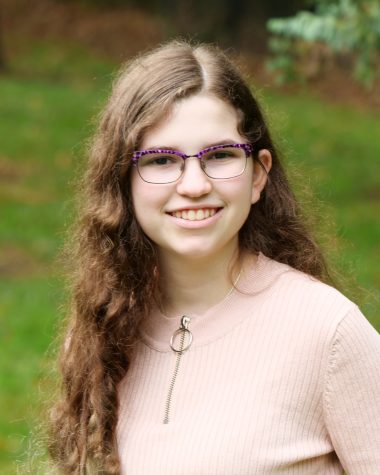Opinion: Let’s talk about tznius – many students at JDS are uninformed about the rules of modesty in Judaism
September 10, 2020
“You’ll need a note from your parents,” my coach said when I wanted to wear a skirt in PE class.
Despite the fact that CESJDS is a pluralistic Jewish day school, there are few students who keep outright tznius: “modesty” in terms of the Talmudic rabbis. Only two other girls in my grade wear skirts or casual dresses for religious purposes, one of whom is my sister. As a result, I needed parental confirmation that I wasn’t simply slacking off from changing into athletic clothes.
It was frustrating for a teacher in a Jewish private school to tell me I needed proof that I was wearing an article of clothing due to Jewish customs, though it wasn’t their fault. Since several JDS staff members are not Jewish, and most students don’t wear skirts or observe noticeable tznius, there is an unfortunate lack of awareness around the topic.
My old school, Kemp Mill Montessori, was orthodox. There, tznius was enforced through the dress code. It wasn’t weird that I wore a skirt everyday because everyone else did too.
Then I came to JDS, an overall less observant school. It was an interesting transition both socially, religiously and academically.
I had heard about the loose dress code, but I was surprised by how uncommon it was to see students wearing skirts. In about a week, many of my classmates noticed I hadn’t worn sweatpants or leggings, and the questions started. I realized then how little they knew about tznius and the other more observant practices that structure my life.
At JDS, wearing a skirt is an equivalent to wearing a dress, both of which my peers reserve for debates and presentations that require us to dress up for a good grade. While talking about an upcoming mock trial, someone told me that I just needed to change my top, since I ‘already wear skirts.’
There are several classes on Judaism and Jewish history at JDS, but students and teachers are uninformed about modern religious practices aside from the existence of Shabbat, kippot and kashrut.
According to Jewish Text Department chair Aviva Gershman, students do learn about tznius, it’s just not identified as such, as it can be hard to actually talk about the idea for a number of reasons relating to both teachers and students.
“There’s a fear that either [discussing tznius] will be received badly by students, or that students will walk away with the wrong message,” Gershman said.
It’s a lot of unknown territory to cover, but Gershman thinks that it is important to teach about, especially in a Jewish school.
The modern image of tznius is mostly of observant Jewish women; they don’t show their knees or elbows and avoid low necklines. Some cover their ankles and wrists.
Really, the rabbis interpreted tznius as the modesty of not only dress, but speech and behavior, for all genders. Clothing is the only aspect that’s visible, and therefore the one people most commonly notice.
The reason behind tznius is widely interpreted. Some believe it’s a custom that pleases G-d. Others think of it as personal privacy and respect. I have heard too many times that modestly dressing is done to avoid “distracting” men. While I understand the idea behind it, I don’t think the way one dresses should enable consent in any form to the people around them, nor should the fear dictate what one wears.
My family is orthodox and keeps tznius, so I’m quite familiar with it. I have never seen my father outside the house without a shirt on. Even when we go to the beach, he’ll walk right into the ocean wearing a rash guard and long cargo pants. We don’t even dress as strictly as other families I know.
I grew up wearing skirts and currently am not allowed to leave the house without one. There are special exceptions, but for the most part, you will never see me wearing pants. I am still allowed to show my elbows and knees and don’t have to cover my collarbone in public, but that’s not what people notice when they look at me.
Though I didn’t choose to dress like this, it’s not something I’m ashamed of. I don’t like the feeling of being forced to do something, yet despite that, I know I would dress the same, even if I could wear whatever I wanted. I was the one, after all, who asked to wear a skirt in PE, not my parents.
JDS does a good job of making the less observant students feel comfortable in a more Jewish environment, but I feel as if students know more about what it’s like to be an observant Jew in the time of King David than in the world today.







